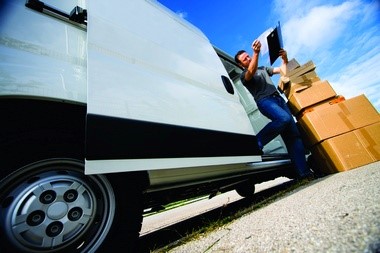Lets work together



Suite 3A, Chapel Allerton House, 114 Harrogate Road, Leeds, LS7 4NY
ukinfo@integrated-skills.com
+44 (0) 3300 888 670

The life of a courier is not always an easy one: Traffic congestion, no parking spaces, no one at home are typical sources of frustration. There are quite a few different types of courier—bike couriers, motorcycle couriers, car and van couriers and truck and lorry couriers. Each of these can potentially carry a different type of package, from post to parcels and from food to furniture. Other more specialised couriers transport more delicate items such as medical equipment, sensitive machinery and hazardous goods.
The Single Drop Job
As a courier who might ride a bike or motorcycle they might start their day by heading to a dispatch office, but will probably call in via radio or mobile phone to state their location. If the dispatcher has a job ready for that rider, they will notify him or her of the details via their console or smartphone app. The rider will then bypass the dispatch office and head to the first pick up point. They will carry only that one parcel initially but may receive a job to collect something else along the route they are traveling to the destination of the first parcel. They will go for the second parcel and then continue the first journey, dropping that package off before heading to the second one.
The Multi Drop Job
The day will start with the driver picking up their goods at a depot if they are a multi-drop courier. It might even be a distribution centre where goods are received and dispatched via articulated lorries or vans driven by a mix of couriers or dedicated delivery drivers. Catalogue stores, furniture warehouses, food distribution companies, breweries and distilleries and the like all use some kind of modern logistic methods for directing their transportation. Transportation fleet management can involve a complex network of vehicles that rely on knowing where to go and when they need to be there in order to carry out the duties of the company as thoroughly as possible.
The Advantage of Modern Technology
Efficiently operated courier companies rely on a mixture of vehicle tracking, dispatch management and route planning software that enable them to keep tabs on their riders, manage last minutes changes and plan their routes to keep costs to a minimum. Thinking about the logistics of running a company that has a fleet of vehicles—whether owned, leased or drive-owned—a company must keep its overheads down to a minimum. Of all the software deployed to manage the courier/delivery operation route planning software has the greatest impact on lowering costs: It can significantly reduce daily mileage, number of vehicles, vehicle type deployed and driving hours thus reducing direct costs as well as environmental impact. It can also save a small fortune on vehicle servicing because the less mileage the vehicles do, the longer time it will take for services to come around. Therefore, everyone wins and there are no losers.
Would you like to know more about Courier Drivers, Their Work and Software to Manage Them? Fill in your details below and let us know how we can help.
Website Designed & Built by we are CODA